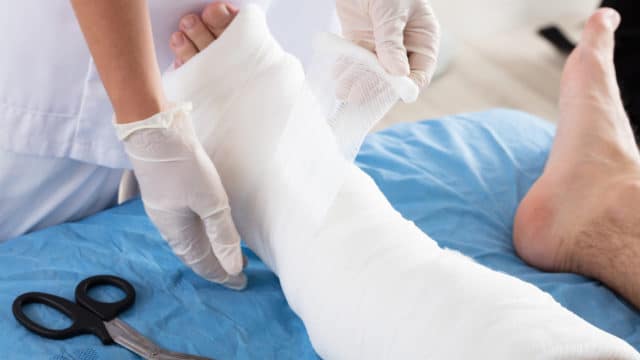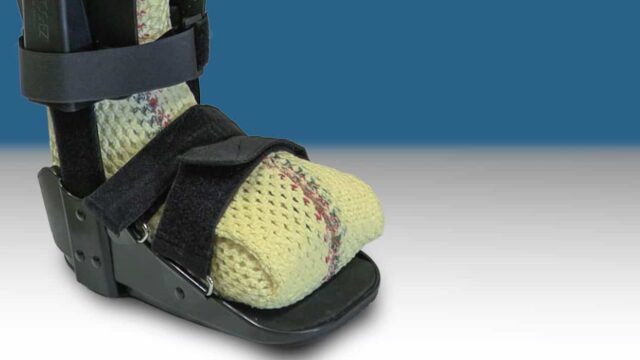Diagnostic Techniques for Arterial and Venous Ulcers
Accurate diagnosis is a crucial first step in managing leg ulcers. Healthcare professionals use various diagnostic techniques to determine whether an ulcer is arterial, venous, or of another origin. This information guides treatment decisions and helps predict outcomes.
Common Diagnostic Methods
Physical Examination:
- Visual inspection of the ulcer and surrounding skin
- Assessment of pulses, skin temperature, and hair distribution
- Evaluation of pain characteristics and swelling
Ankle-Brachial Index (ABI):
- A non-invasive test comparing blood pressure in the ankle to that in the arm
- Helps assess blood flow in the lower limbs
- Commonly used to evaluate arterial circulation
Doppler Ultrasound:
- Uses sound waves to create images of blood flow in the veins and arteries
- Useful for assessing both arterial and venous circulation
Transcutaneous Oxygen Measurement (TCOM):
- Measures oxygen levels in the skin
- Can help determine if there’s adequate blood flow for healing
Wound Culture:
- Used to identify any infection in the ulcer
- Guides antibiotic treatment if necessary
Biopsy:
- In some cases, a small tissue sample may be taken to rule out other conditions
Importance of Accurate Diagnosis
Proper diagnosis is essential for several reasons:
Treatment Planning: Different types of ulcers require different treatment approaches. An accurate diagnosis ensures that the most appropriate treatment plan is implemented.
Predicting Outcomes: Understanding the underlying cause of the ulcer helps healthcare providers estimate healing time and potential complications.
Preventing Complications: Misdiagnosis can lead to ineffective treatments or even harmful interventions. For example, compression therapy, which is beneficial for venous ulcers, can be harmful if applied to arterial ulcers.
Patient Education: A clear diagnosis allows patients to understand their condition and the rationale behind their treatment plan.
Resource Allocation: Accurate diagnosis helps efficiently allocate medical resources and plan for long-term care if necessary.
Healthcare professionals consider multiple factors when choosing diagnostic methods, including the patient’s medical history, symptoms, and overall health status. The combination of diagnostic techniques may vary based on individual circumstances and available resources.
Patients with leg ulcers should work closely with their healthcare providers to understand their diagnosis and treatment plan. Regular follow-ups and open communication are key to effective management and promoting optimal healing outcomes.
Managing Arterial and Venous Ulcers
Effective management of arterial and venous ulcers typically involves a combination of professional medical care and patient self-care. While healthcare professionals should always determine specific treatment plans, understanding general management principles can help patients play an active role in their care.
Professional Medical Care
The cornerstone of ulcer management is regular professional medical care. Healthcare providers play a crucial role in:
- Assessing the ulcer and monitoring its healing progress
- Providing appropriate wound care and dressing changes
- Addressing underlying circulatory issues
- Managing pain and preventing complications
- Adjusting treatment plans as needed
Early and consistent professional intervention is key to improving outcomes. Patients should seek medical attention promptly if they notice any wounds on their legs or feet, especially if they have risk factors for arterial or venous disease.
General Wound Care Principles
While healthcare professionals should direct specific wound care, some general principles often apply:
- Keeping the wound clean
- Protecting the wound from further injury
- Following professional advice on dressing changes
- Monitoring for signs of infection or other complications
Lifestyle Considerations
Certain lifestyle factors can impact ulcer healing and overall circulatory health:
Diet: A balanced diet rich in nutrients can support healing. Healthcare providers may offer guidance on beneficial dietary choices.
Smoking: Smoking can negatively impact circulation and wound healing. Healthcare professionals often discuss smoking cessation strategies with patients.
Exercise: Appropriate physical activity, as advised by healthcare providers, may help improve circulation.
Weight Management: Maintaining a healthy weight can reduce pressure on the legs and feet.
Foot Care: Proper foot hygiene and protection are important, especially for those at risk of ulcers.
Effective management of arterial and venous ulcers typically involves a combination of professional medical care and patient self-care. While healthcare professionals should always determine specific treatment plans, understanding general management principles can help patients play an active role in their care.
Professional Medical Care
The cornerstone of ulcer management is regular professional medical care. Healthcare providers play a crucial role in:
- Assessing the ulcer and monitoring its healing progress
- Providing appropriate wound care and dressing changes
- Addressing underlying circulatory issues
- Managing pain and preventing complications
- Adjusting treatment plans as needed
Early and consistent professional intervention is key to improving outcomes. Patients should seek medical attention promptly if they notice any wounds on their legs or feet, especially if they have risk factors for arterial or venous disease.
General Wound Care Principles
While healthcare professionals should direct specific wound care, some general principles often apply:
- Keeping the wound clean
- Protecting the wound from further injury
- Following professional advice on dressing changes
- Monitoring for signs of infection or other complications
Lifestyle Considerations
Certain lifestyle factors can impact ulcer healing and overall circulatory health:
Diet: A balanced diet rich in nutrients can support healing. Healthcare providers may offer guidance on beneficial dietary choices.
Smoking: Smoking can negatively impact circulation and wound healing. Healthcare professionals often discuss smoking cessation strategies with patients.
Exercise: Appropriate physical activity, as advised by healthcare providers, may help improve circulation.
Weight Management: Maintaining a healthy weight can reduce pressure on the legs and feet.
Foot Care: Proper foot hygiene and protection are important, especially for those at risk of ulcers.
Compliance with Treatment Plans
Adhering to treatment plans prescribed by healthcare professionals is crucial for effective ulcer management. This may include:
- Taking medications as prescribed
- Using any recommended assistive devices or compression garments
- Attending all scheduled follow-up appointments
- Reporting any changes in symptoms promptly
The Importance of Professional Care for Arterial and Venous Ulcers
Professional medical care plays a pivotal role in the management of arterial and venous ulcers. While understanding one’s condition is valuable, the expertise of healthcare professionals is essential for proper diagnosis, treatment, and ongoing care, especially with chronic wounds or ulcers.
Expertise in Diagnosis
Healthcare professionals have the training and tools to diagnose the type and severity of leg ulcers accurately. This expertise is crucial because:
- Arterial and venous ulcers can sometimes look similar to the untrained eye
- Proper diagnosis is fundamental to determining the most effective treatment approach
- Many chronic or non-healing ulcers require specialized treatment
- Some ulcers may have mixed arterial and venous components, requiring specialized assessment
Comprehensive Treatment Plans
Wound care specialists develop personalized treatment plans that may include:
- Advanced wound care techniques
- Management of underlying circulatory issues
- Coordination with other medical specialists when necessary
Specialized Care Facilities
Many healthcare systems offer specialized wound care centers. These facilities often provide:
- Access to the latest treatment technologies
- A team of professionals with diverse expertise
- Treatments like debridement, advanced dressings, and, in some cases, therapies such as hyperbaric oxygen treatment
What to Expect During Professional Care
When seeking professional care for leg ulcers, patients may experience:
- Thorough assessment of the wound and overall health status
- Diagnostic tests to determine ulcer type and severity
- Development of a customized treatment plan
- Regular follow-up appointments to monitor progress
- Adjustments to the treatment plan as needed
- Education on self-care techniques to support healing
The Role of Ongoing Monitoring
Even as ulcers heal, continued professional care is important for:
- Preventing recurrence
- Addressing any new concerns promptly
- Maintaining overall leg health
The Value of Expert Care
Professional care is essential for optimal healing and prevention of complications. Healthcare providers:
- Have experience with a wide range of ulcer presentations
- Stay updated on the latest treatment approaches
- Can identify and address potential complications early
Remember, while general knowledge about ulcers can be helpful, it’s not a substitute for professional medical care. If you have concerns about leg ulcers or any unusual changes in your legs or feet, it’s important to seek evaluation from a qualified healthcare provider. Take the first step towards better wound health today. Contact your nearest Healogics Wound Care Center to schedule a consultation and learn more about our advanced treatment options. Simply click here to find a Center to get started on your healing journey. Together, we can find, treat, and heal your wound, ensuring you receive the comprehensive care you deserve.




